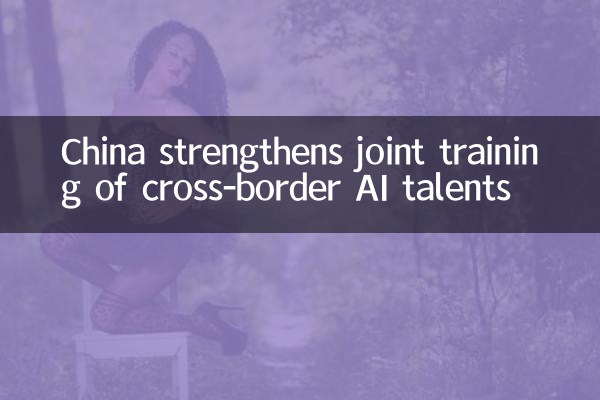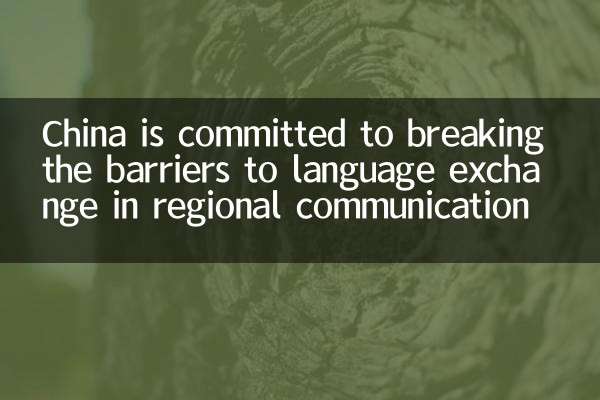China strengthens joint training of cross-border AI talents
In recent years, artificial intelligence (AI) technology has developed rapidly around the world and has become a strategic area that countries are competing to deploy. As an important participant and promoter of AI technology, China has recently taken a series of measures to jointly train cross-border talents, aiming to strengthen international cooperation and enhance talent competitiveness. The following are hot content and data analysis related to AI cross-border talents among popular topics across the Internet in the past 10 days.
1. Policy dynamics and hot events

1.Ministry of Education releases AI cross-border talent training plan: The Ministry of Education and the Ministry of Science and Technology of China recently released the "Action Plan for Joint Training of Cross-border Talents in Artificial Intelligence", proposing that in the next three years, it will promote cooperation with 20 top universities around the world to jointly cultivate high-level AI talents.
2.Sino-US AI talent exchange project restarts: The Sino-US AI talent exchange project, which was once stagnant due to the epidemic, has recently been restarted, and the first batch of 30 Chinese students have gone to the United States to participate in joint research.
3.The Guangdong-Hong Kong-Macao Greater Bay Area AI Talent Alliance was established: Hong Kong, Macao and nine mainland cities jointly initiated the establishment of an AI Talent Alliance, which plans to train 1,000 cross-border AI professional talents every year.
2. Related data statistics
| index | 2021 | 2022 | 2023 (Forecast) |
|---|---|---|---|
| Number of international students in China's AI major | 12,000 | 15,800 | 18,500 |
| Number of joint AI laboratories in China and abroad | 45 | 68 | 90+ |
| Cross-border AI talent training project | 32 | 57 | 80+ |
3. Analysis of the main cooperation model
Currently, China's joint AI cross-border talent training mainly adopts the following three models:
1.Double Degree Program: Students also obtain degrees from Chinese and foreign universities, such as the Tsinghua University-MIT Joint AI Master Program.
2.Short-term exchange plan: Including semester exchanges, summer schools and other forms, such as the AI summer research program of Shanghai Jiaotong University and Stanford University.
3.Joint training of enterprises: Huawei, Alibaba and other companies cooperate with overseas universities to set up laboratories to cultivate practical talents.
4. Challenges and prospects
Despite progress, AI cross-border talent training still faces some challenges:
| Challenge Type | Specific performance |
|---|---|
| Technical barriers | Some countries set restrictions on the exchange of AI core technologies |
| Cultural differences | There are difficulties in connecting the education system between China and foreign countries |
| Funding investment | High-level joint training projects are costly |
Looking to the future, experts recommend:
1. Establish more diversified international cooperation networks, not limited to developed countries in Europe and the United States;
2. Strengthen the coordination between industry, academia and research, and improve the practicality of talent training;
3. Improve supporting policies to facilitate cross-border talent flow.
V. Conclusion
Against the backdrop of increasingly fierce global AI competition, China has important strategic significance for strengthening joint training of cross-border talents. By deepening international cooperation and innovative training models, China is expected to contribute more wisdom and strength to the global AI development, and will also enhance its talent reserves and technical strength in the field of AI.

check the details

check the details